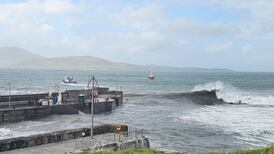Forty-nine of America’s Catholic bishops, including at least 20 of Irish birth or descent, attended the opening sessions of the Vatican Council in December 1869 and three others, including Thomas Grace of Saint Paul, Minnesota, the son of parents from Co Kilkenny, sent representatives.
Grace’s appointee was John Ireland, an energetic curate who was born in Burnchurch near Cuffesgrange in the same county and had been brought to the United States in 1852 when he was 14 years old. As a mere priest, he took no part in the council’s debates but he got to know men who would be future colleagues, and the ways of the Roman Curia.
The Irelands had settled in Saint Paul at the junction of the Mississippi and Minnesota rivers, and in 1853 young John came to the notice of Grace’s predecessor, the French-born Joseph Crétin, who obtained his agreement and his parents’ permission to send him to a seminary in France for training for the priesthood.
He was ordained by Grace in 1861 and after a brief period as a chaplain to the Minnesota Volunteer Infantry during the Civil War, he was assigned to the cathedral parish. When Grace resigned in 1884, Ireland succeeded him and became an archbishop in 1888.
American Catholic bishops in the second half of the 19th century, although theologically orthodox, had divided opinions on many subjects and were generally content to air their differences in public. One fault line was between those who saw the church in the United States essentially as an extension of the church in Europe and others who wanted to “Americanise” it.
John Ireland became the most prominent figure in the latter group.
In his book, The Church and Modern Society, published in 1896, he wrote that, "We owe it to the Church to make plain our Americanism, our loyalty to America. In no other land is there given to Catholics the freedom of action and the opportunity for work given to them in America".
No doubt, his optimism was partly grounded on the rapid growth of the church which had 2,000,000 members when he arrived in the country and 12,000,000 by the end of the century.
When he died, his own archdiocese and its 12 suffragan dioceses had a Catholic population of 1,000,000 and 600 priests.
He was also ahead of his time in recognising the equality of black and white people but he saw native Americans as “wards of the state”. Socially, he was known to have an “aggressive” personality and, by one account, to be an “ecclesiastical tornado” but he refused to allow people to kiss his ring and insisted on being addressed as archbishop rather than “Your Grace”.
In January 1876, he joined forces with the Saint Paul and Pacific Railroad to promote the settlement of unoccupied land within reach of the railway line with benefits for both the company and the diocese.
By 1880, acting as agent for the Catholic Colonisation Association, he had placed 4,000 families on 400,000 acres of land formerly owned by the Sioux. Most of the new occupants were people with capital and skills and the project was generally successful.
Then, an Irish priest, James Nugent, asked him to settle 50 families who were living in poverty in Connemara. Despite misgivings about their suitability, he accepted them and allocated 160 acres to each of them.
But they had no farming skills and lacked the physical strength to plant crops and within a few months they had surrendered the land and moved into the city, as Saint Paul now was.
Ireland found jobs for most of the men with the railroad and helped them to settle in an area east of the city that became known as the Connemara Patch.
Unlike most of his colleagues, he was a vocal supporter of the Republican party and became a confidant of presidents William McKinley, Theodore Roosevelt and Howard Taft but he was also influential in persuading Pope Leo XII not to condemn the major American union, the Knights of Labour, because of its origin as a secret society.
In July 1900, McKinley sent him to Paris as “an eminent representative of American patriotism and eloquence” to present a statue of the Marquis de Lafayette to the French nation on behalf of the American government.
In 1901, he received an honorary doctorate from Yale University, a rare honour for an Irishman or a Catholic bishop. His fellow recipients included Roosevelt and Mark Twain.
Ireland is also remembered in American Catholic history for his advocacy of temperance, for helping to found the Catholic University of America and for a controversial plan to rent Catholic schools to the state during school hours.
After his death on September 25th, 1918, his fellow “Americaniser”, Cardinal James Gibbons, the archbishop of Baltimore, described him as “the man who contributed perhaps more than any other to the harmony that exists between the constitution of the Church and the constitution of the United states”.
A Celtic Cross was unveiled in his memory, in Burnchurch, in 1966.









